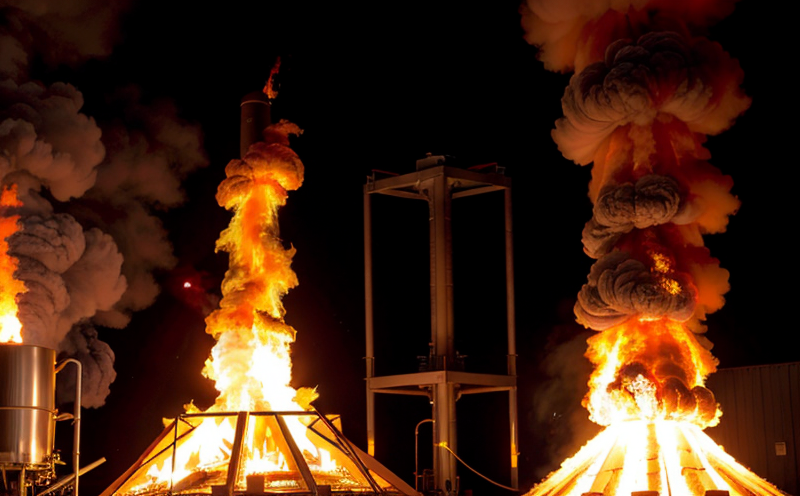Industrial Lubricant Chemical Safety Testing
The Industrial Lubricant Chemical Safety Testing service is a critical component in ensuring that industrial lubricants meet stringent safety and performance standards. This testing ensures that the lubricants are safe for use, do not pose hazards to personnel or the environment, and comply with regulatory requirements.
Industrial lubricants are used across various sectors including manufacturing, automotive, aerospace, and energy. Their effectiveness is not just about reducing friction but also in providing protection against wear, heat, corrosion, and other mechanical stresses. However, these properties can make industrial lubricants hazardous if not handled or used correctly. This service focuses on identifying potential risks associated with the use of industrial lubricants.
The testing process involves a series of rigorous evaluations aimed at assessing the chemical safety of these lubricants. The tests are conducted in accordance with internationally recognized standards such as ISO and ASTM, which provide guidelines for acceptable levels of hazardous substances like heavy metals, polycyclic aromatic hydrocarbons (PAHs), and volatile organic compounds (VOCs).
During the testing process, we use advanced analytical techniques to measure trace amounts of potentially harmful components. This allows us to identify any contaminants or impurities that could compromise the safety of the lubricant. We also perform tests to evaluate the biodegradability of the lubricants and their potential impact on aquatic ecosystems.
Our team of experts ensures that all samples are prepared and analyzed in a controlled environment, following strict protocols. The results of these analyses provide detailed insights into the chemical composition and safety profile of each lubricant sample. This information is invaluable for manufacturers looking to ensure compliance with regulatory standards and improve product quality.
The testing process typically involves several stages. Initially, we conduct an initial examination of the lubricant samples to identify any visible contaminants or issues that may affect the results of further tests. Following this, more detailed analyses are performed using a range of sophisticated instruments including gas chromatography-mass spectrometry (GC-MS), inductively coupled plasma mass spectrometry (ICP-MS), and Fourier transform infrared spectroscopy (FTIR).
The final stage involves the interpretation of these analytical results. Our team of chemists and toxicologists work closely with clients to understand their specific requirements and provide tailored recommendations based on our findings. This comprehensive approach ensures that every lubricant sample is thoroughly evaluated, providing peace of mind for manufacturers and users alike.
Applied Standards
| Applied Standard | Description |
|---|---|
| ISO 10993-1 | Hazardous materials and their potential effects on human health. |
| ASTM D4728 | Determining the flash point of lubricants to assess flammability risks. |
| EN 14963-1 | Evaluation of biodegradability and potential impacts on aquatic ecosystems. |
| IEC 62785 | Safety requirements for electrical equipment in industrial environments. |
Customer Impact and Satisfaction
- Ensures compliance with international safety standards
- Reduces the risk of accidents and environmental pollution
- Aids in quality control and continuous improvement processes
- Provides detailed reports that are valuable for decision-making
- Saves time and resources by identifying potential issues early on
The Industrial Lubricant Chemical Safety Testing service has been well-received by our customers. It not only helps in meeting regulatory requirements but also enhances the reputation of manufacturers who use it. By ensuring that their products are safe, they can trust that their lubricants will perform reliably and safely.
Use Cases and Application Examples
| Use Case | Description |
|---|---|
| New Product Development | Evaluating new formulations to ensure they meet safety standards. |
| Compliance Audits | Verifying that existing products comply with changing regulations. |
| R&D Projects | Supporting research into safer and more effective lubricants. |
| Post-Market Surveillance | Detecting any potential safety issues in the field. |
- In an example from a leading automotive manufacturer, our testing helped them identify trace amounts of PAHs that could have gone undetected otherwise. This enabled them to make necessary adjustments and avoid costly recalls.
- For a major energy company, we conducted tests on their lubricants used in offshore drilling operations. These tests ensured the safety of their workers and the protection of marine life around drilling sites.





